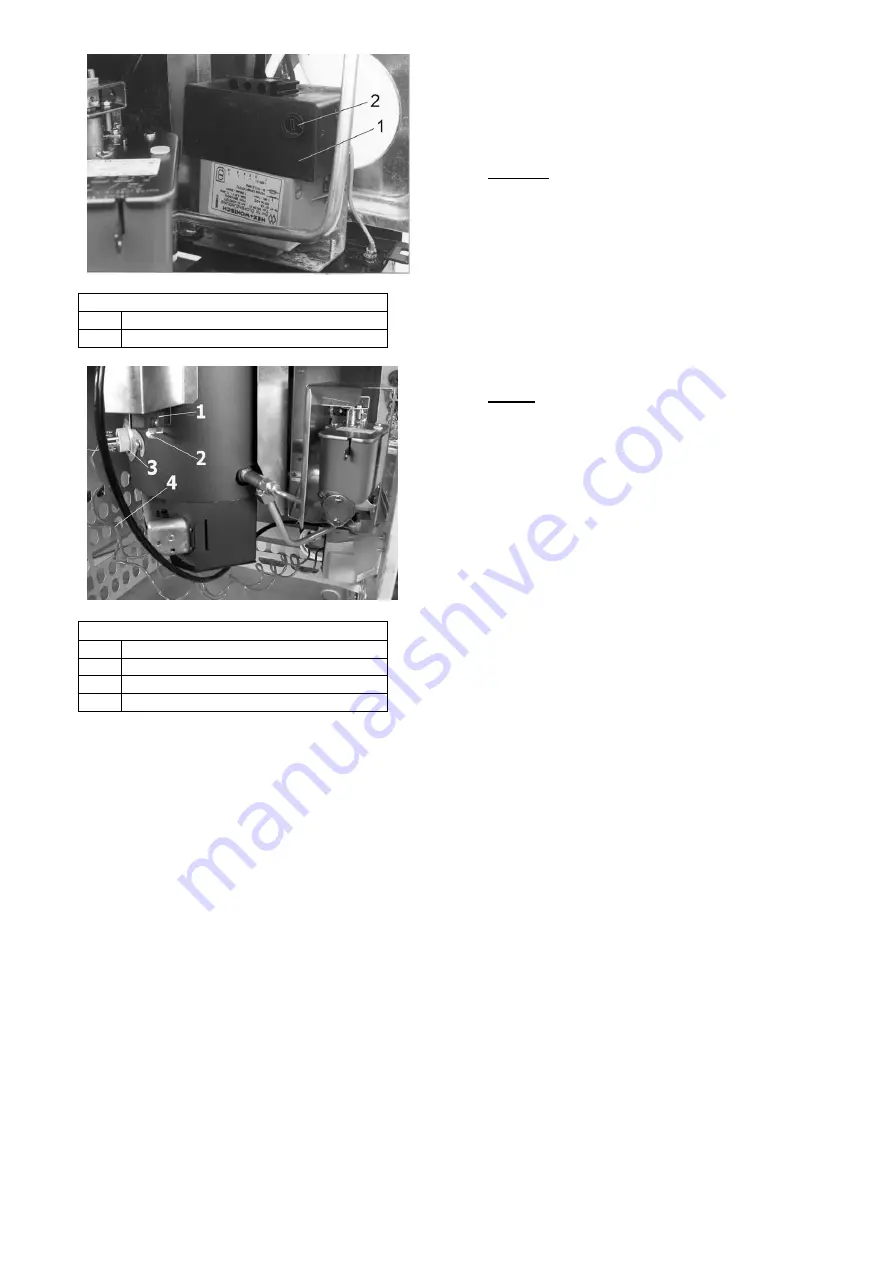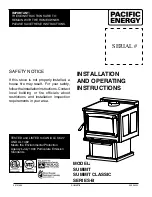
Figure 16:
Ignition transformer
1
Ignition transformer
2
Screw cap with microfuse
Figure 17:
electric ignition
1
Bimetal switch
2
Adjusting screw
3
Ignition bar with terminals
4
Supply line
In operation the electric ignition has a power
consumption of 63 watt (see name plate). The electric
ignition is only activated when the output controller of
the oil stove is set to an output stage between “1” and
“6”. However, when the inner stove of the appliance
has heated up sufficiently (this is the case even a few
minutes after the start), the electric ignition is switched
off automatically with the bimetal switch (see Figure
17). When the oil stove is hot or the output controller
set to “0”, the appliance does not consume any electric
power and does not therefore use up any electric
current.
11. Oil stove operation
The oil stove must only be started by adults. Never
allow children to be present near the oil stove on their
own. The oil stove must only be used in accordance
with these operating instructions.
Please check the correct seat of the pressure
equalisation plate (see Figure 2) before start-up.
Please observe the safety instructions provided in
Chapter 2.
11.1. Suitable fuels
Only extra light fuel oil (ELFO) according to DIN 51603
(or the standard applicable in your country) is suitable
and allowed for firing in your oil stove. This is pointed
out both on the appliance plate and on the screw cap of
your oil tank (“use only special stove fuel oil”).
Caution:
Not every mineral fuel oil can be burnt in your
appliance. Use only proven brand fuel oils in your oil
stove. Unsuitable oils and contaminated fuel oils cause
operating problems. Dirt and soot accumulation of the
stove, clogging the oil controller and the pipe- lines.
Flammable liquids other than those mentioned above
such as petrol, benzene, engine lubricating oil, waste
oil or solvents must
never
be burnt in your heating
appliance. Neither should you use any additives or
other additional substances with your fuel oil.
Notes:
1. Store fuel oil only in tanks intended for this purpose
and in suitable storage rooms, while observing the
regulations of your responsible fire protection authority
or building authority.
2. The fuel oil storage temperature should not be
significantly lower than 0°C. Otherwise paraffin could
settle out and result in filter repositioning. Low
temperatures also have an unfavourable effect on the
viscosity and the flow characteristics of fuel oil. If frost-
free storage of fuel oil is not possible, we recommend
intermediate storage of the fuel oil in the filling can in a
heated room before filling it into the oil stove tank.
11.2. Filling the oil tank
Remove the screw cap before filling. Fill the oil in using
a spout can. Ensure that the oil is not filled in too
rapidly and that no oil is spilt. Please close the screw
cap again after filling. Note: please remember that cold
fuel oil from the cellar will expand with rising
temperature. Do not therefore fill the tank to
overflowing.
11.3. Initial start-up of your oil stove
Prior to initial start-up, remove any adhesive stickers,
packaging and all accessory components from the
firing chamber.
Please verify that the enclosed oil pan is positioned
exactly under the oil-carrying components (oil controller
and oil lines) in its correct position as intended.
Also verify that both burner rings (made of cast iron)
are correctly positioned in the firing chamber
(horizontal position). The firing chamber is accessible
through the firing chamber door.
The lower burner ring must rest on the bead of the
burner insert, the upper ring on the three support pins
as indicated by the designations “lower” and “upper”
burner ring. In addition the inscribed side of the rings
must face up (see Figures 1+ 2 and 18).


































